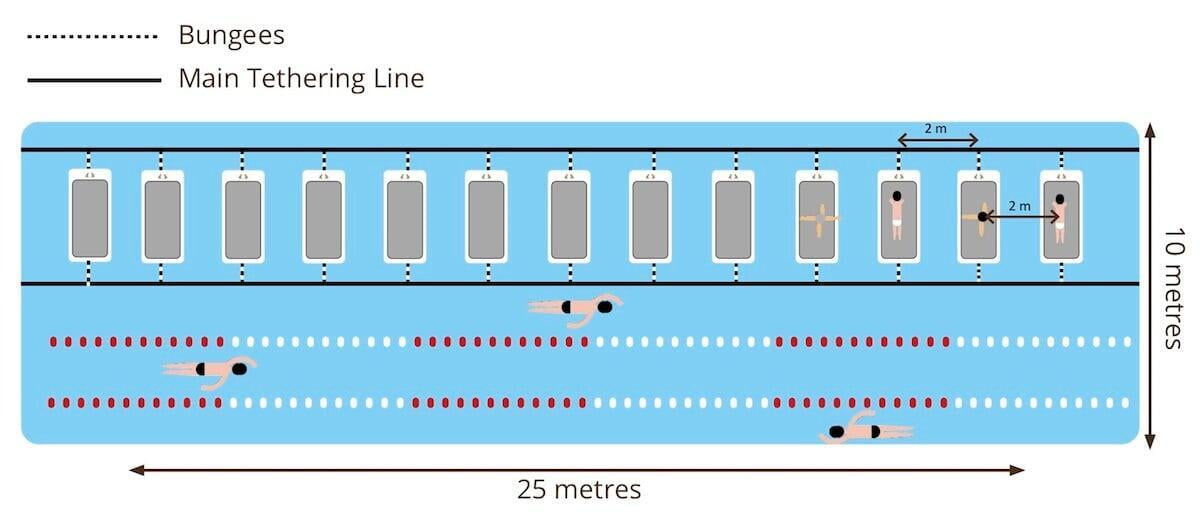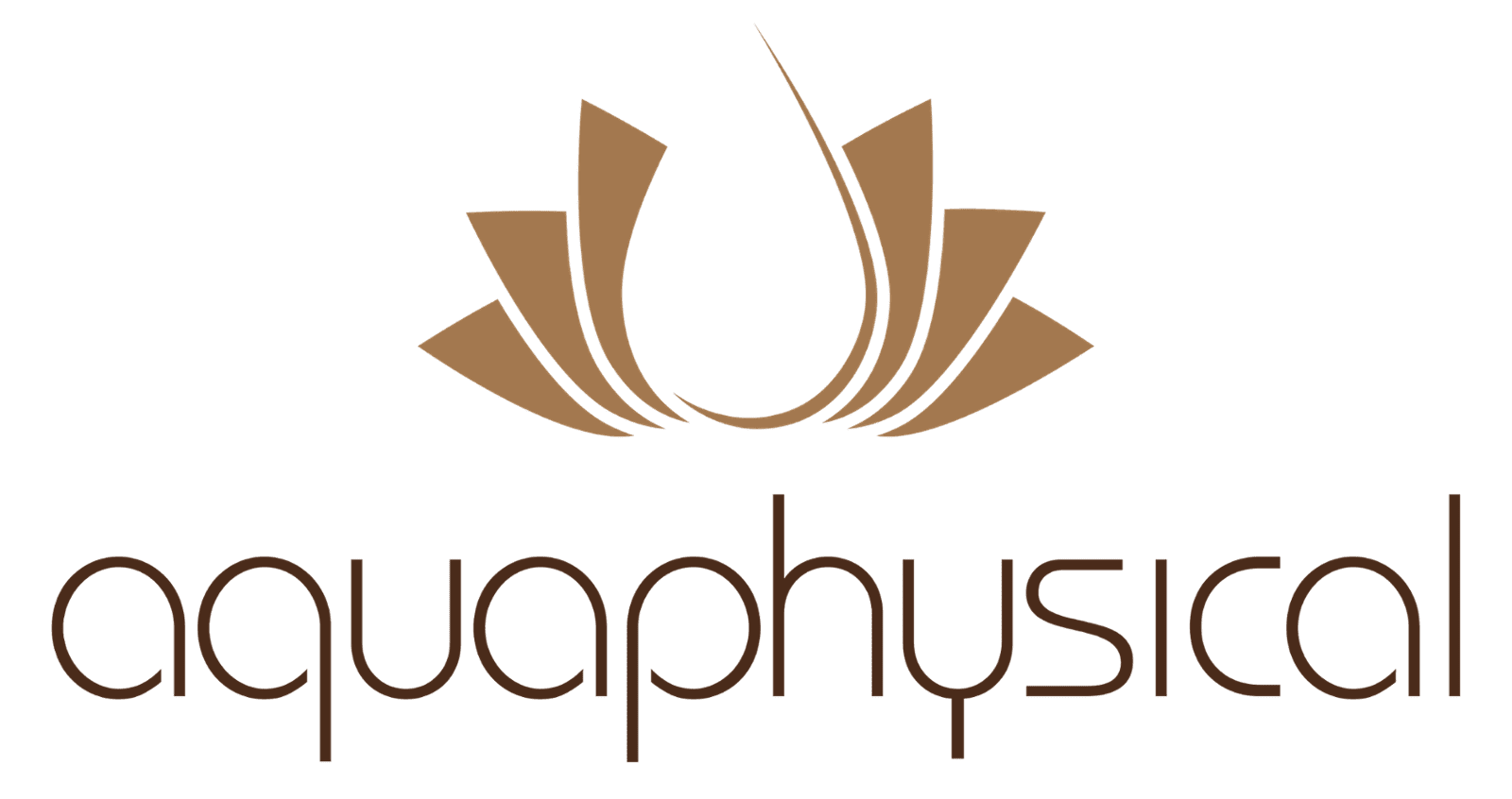Covid-19 Guidance for Facilities
FloatFit is a great way to encourage members back into the pool. It is a fun, effective group exercise class which is perfectly adapted to exercising with social distancing. Benefits of running FloatFit at your facility:
- Attract members back into your facility with a class you can’t do at home
- Participants can observe the 2 metre distance and exercise safely
- Set up can remain the same as pre-COVID classes
- Public Health England confirms chlorine inactivates COVID-19
- Feel safe running FloatFit
The main priority is the safety of everyone involved in running and participating in FloatFit classes.
Similar to all environments, there is a level of risk that Covid-19 will be transmitted in aquatic settings and it requires control measures to be implemented. We recommend facilities create their own risk assessment before running FloatFit classes.
This is initial guidance - please be aware all factors are not currently known and circumstances will change. This guidance has been put together with the information we have currently available. We will develop and improve guidance as appropriate based on practical experience and government recommendations as time goes on.
Swim England recommends 6 metres2 of pool space per participant. For example in a standard 25 metre pool using 2 lanes (each lane 2 metres in width) - this will create 100 metres2 in total to run FloatFit classes. If there are 10 participants in each class – there will be 10 metres2 per participant - which is within the recommended pool space per participant. Please make sure to follow advice from your local government.
If facilities would like to further reduce the risk of spreading the virus they can consider reducing the size of FloatFit classes. As well as adding an additional lane to increase the space surrounding the class. The greater the distance between participants the lower the level of risk of transmission via air droplets.
The standard tethering lines provided by AquaPhysical and normal set-up of the FloatFit class meet the recommended 2 metre distance between participants - as shown on the pool layout below. Please make sure tethering lines have not been tampered with and meet the 2 metre distance requirements. Customised tethering lines can be purchased from AquaPhysical to fit in with facilities requirements. Please email info@aquaphysical.com for more information.

Facilities should adopt the below principles and apply them to their own unique circumstances in order to plan safe and effective sessions.
- FloatFit instructors should deliver classes from poolside
- Allow sufficient time between FloatFit classes for cleaning, and to reduce the chance of clustering groups
- The AquaBase and all equipment should be cleaned in-between use. Submerging or flipping the AquaBase and equipment in adequately chlorinated swimming pool water will reduce the risk of transmission of enveloped viruses
- All facilities are responsible for their own decisions and must consider their individual circumstances, environments, participants, workforce and members
- Participants must not share any equipment and clearly identify their water bottle
- Participants and instructors must maintain social distancing on poolside. Please check this area is big enough to maintain social distancing and reduce class sizes as necessary
- Each facility will be different so it is paramount that each swimming pool performs their own risk assessment
- Appoint a Covid-19 Lead with the overall responsibility to oversee the safe return to FloatFit classes in line with government recommendations. They will be responsible for the monitoring of social distancing and safety of all people involved
- We recommend internally training all FloatFit instructors to make sure they are aware and comfortable with these recommendations
Facility planning and risk assessments should take into consideration (but should not be limited to) the following areas. Always with a focus on maintaining social distancing, minimising transmission risk and adhering to government guidance:
- Arrival and departure protocols
- Activity pre, during and post pool
- The standard of participants and the specific type of activity
- Transitions between activities (e.g. from training sets to breaks)
- The length of pool and width of lanes
- The set-up of poolside space
- Use and cleaning of equipment
- Use of facilities such as changing rooms and dryland areas
- Spectators
- Lifeguarding and safety arrangements
For those in high risk groups (or anyone with concerns) we suggest consulting a medical professional before taking part in FloatFit.
AquaPhysical also recommends:
- Thorough hand washing with soap or if not available, hand-sanitiser, should be undertaken by all participants and workforce before and after FloatFit classes
- Equipment that can't be cleaned in the adequately chlorinated swimming pool water should be cleaned with anti-viral wipes
- Where possible participants should change into their exercise attire at home, arrive at the pool in a tracksuit or other suitable clothing, towel off after training and return home to shower therefore minimising the transmission risk in changing rooms and following the centre guidance where appropriate
- A designated area for FloatFit instructors to instruct from on the poolside should be agreed within the risk assessment and adhered to throughout the session
- FloatFit Instructors should avoid close contact with any participants
- Personal equipment should be cleaned with anti-viral wipes or solution before and after use, and should not be stored at the venue.
- Sharing of equipment is not be permitted
- Individuals should avoid handling other people’s kit and take their own kit home to clean
- A one way system for participants should be put in place when arriving, participating and leaving the swimming pool area
- No physical contact between instructors and participants should take place when making corrections, only oral communication, keeping the required distance
- Create time gaps between sessions so that one group of participants can leave the pool and centre before the next group arrives
The Pool Water Treatment Advisory Group (PWTAG) is the recognised body for swimming water quality standards in the UK, operators should ensure their pool is operating within the guidance detailed in PWTAG technical notes which can be found at pwtag.org. For countries outside of the UK please refer to your local government for guidance on this.
UK swimming pools are commonly disinfected with chlorine (as a primary disinfectant) with a secondary disinfection method in the form of UV light. SARS-CoV-2 is an enveloped virus that is likely to be more sensitive to chlorination than, for example, non-enveloped enterovirus such as adenovirus (World Health Organisation, 2020). There are no Ct values for SARS-CoV-2, but a reported Ct-value (4-log reduction) for adenovirus is 0.75 mg/L min at pH 7.0 (Thurston-Enriquez et al, 2003).
This enables the pool operator to state with confidence that Covid-19 should not be transmissible through the swimming pool water if the pool is operated in line with this guidance and that of PWTAG.
Covid-19 Recommended Pool Chemical levels
- Free Chlorine – min 1.5mg/l
- pH – 7.0
